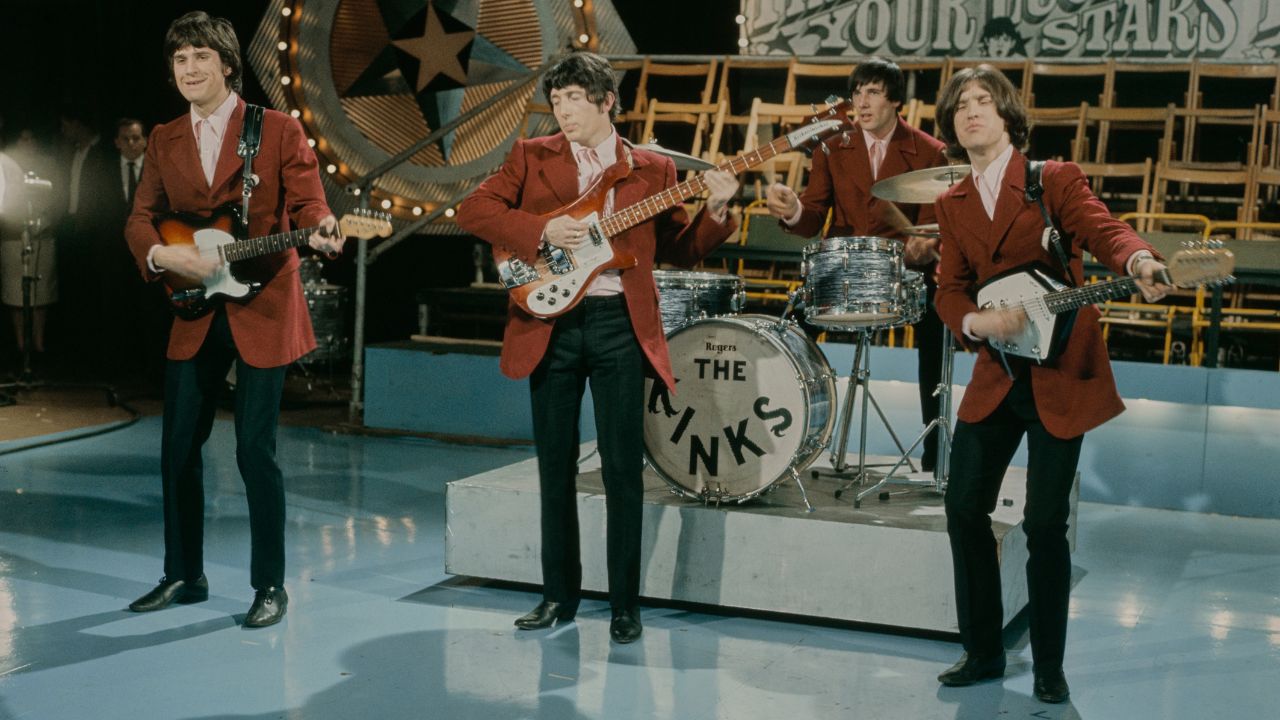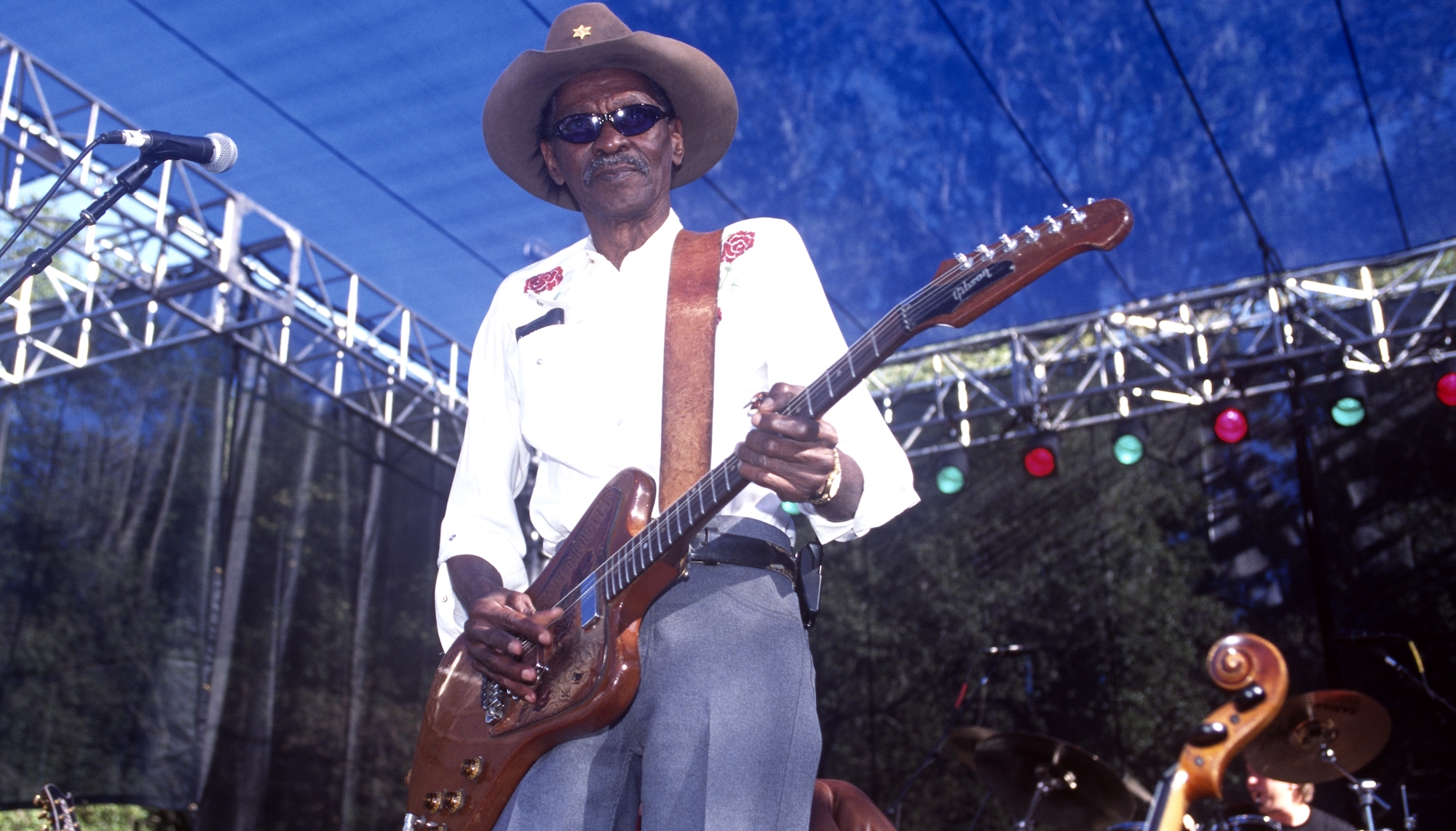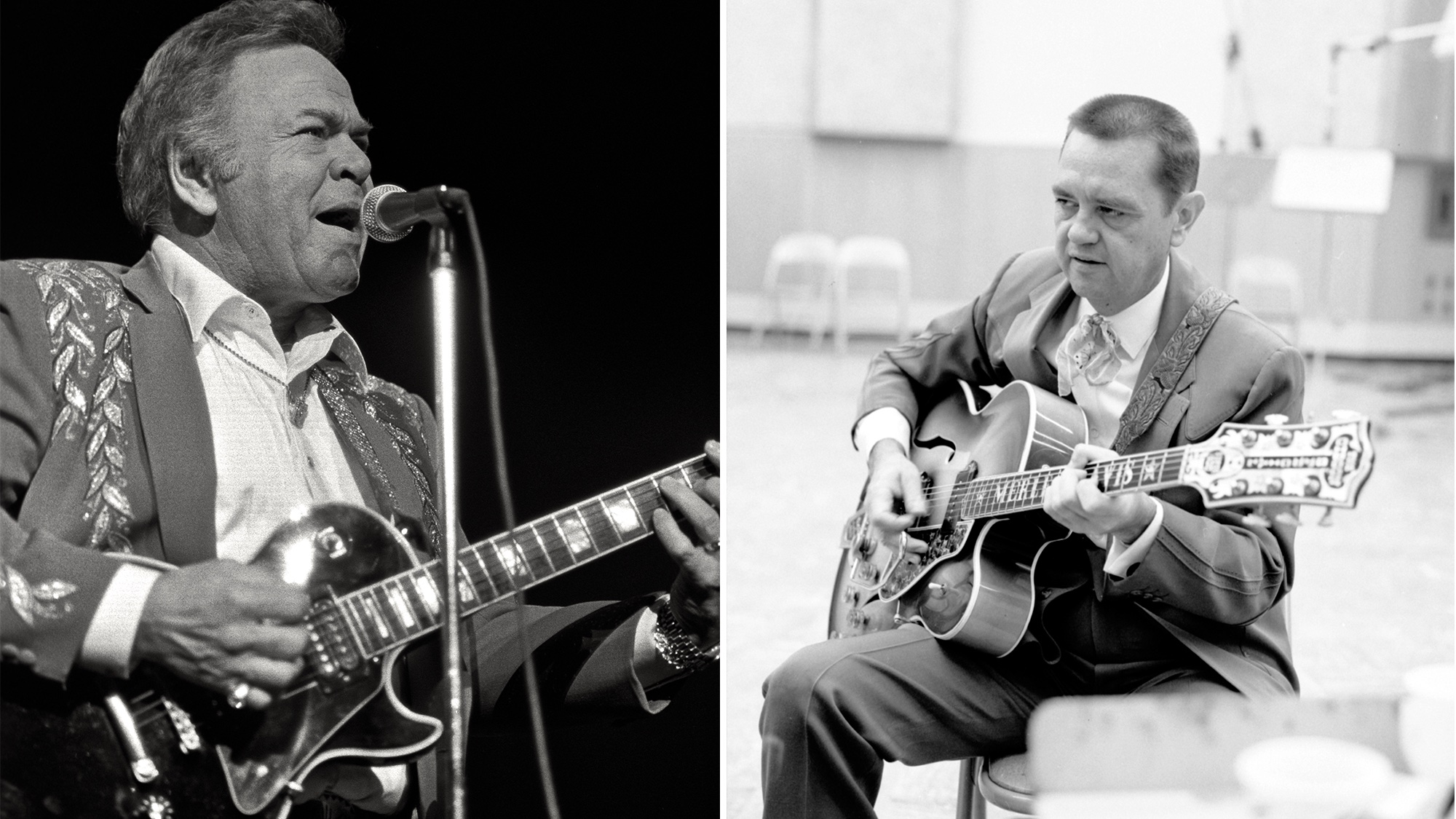Jim Root on designing his first-ever Charvel signature model, his '80s metal heroes and the most common mistakes he sees in Slipknot guitar covers
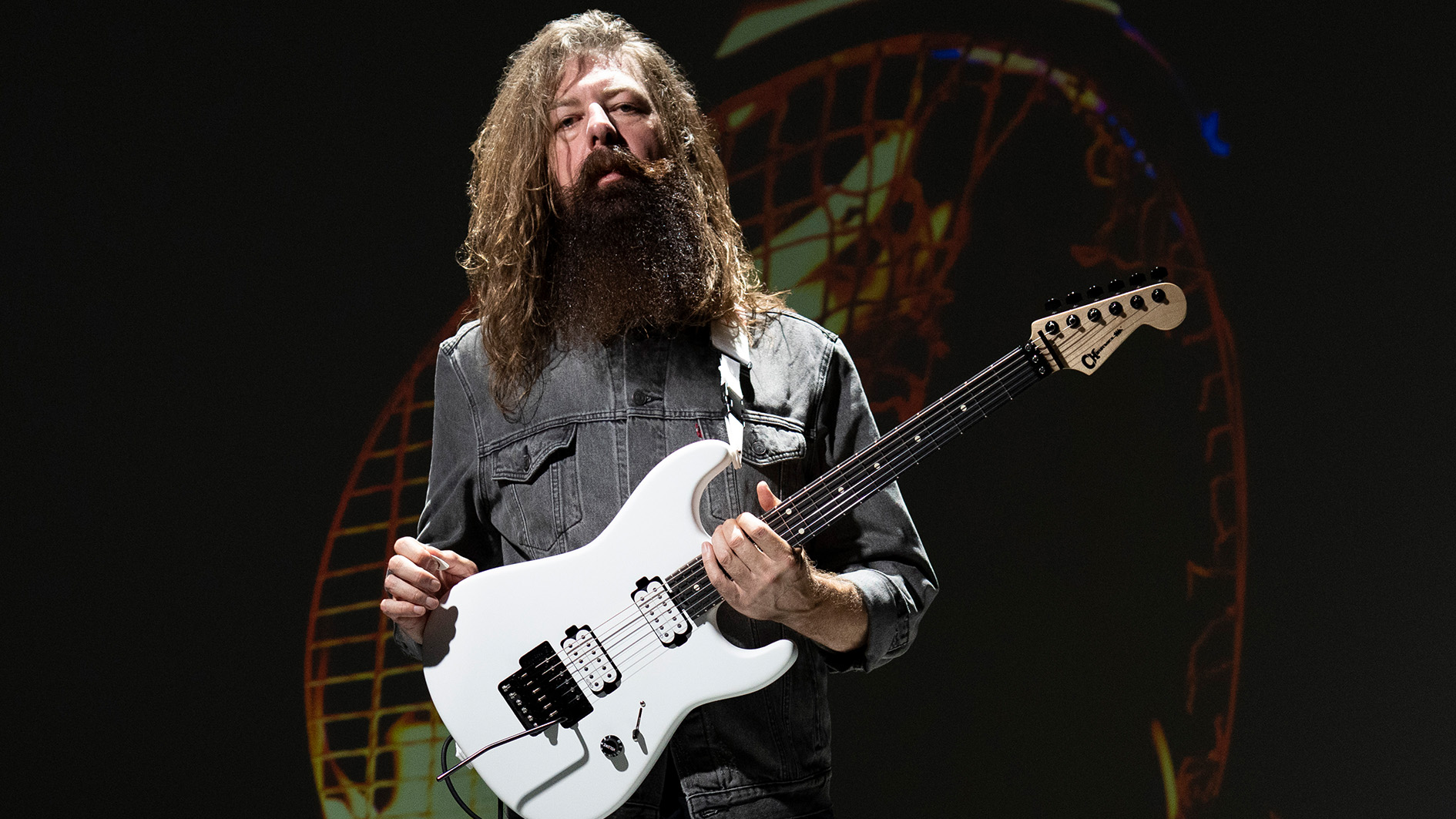
We now know him as the towering lead guitarist of Slipknot, one of the most widely revered metal bands on the planet. But once upon a time, long before he donned the jester mask that would transform him into the Iowa juggernaut's #4, a young Jim Root soaked up the vibrant scene of '80s hair metal.
It was an era defined by loud outfits and even louder electric guitars, with Root citing the likes of Mötley Crüe, Dokken, Twisted Sister as some of his early influences. And inspired principally by the six-string arsenal of Ratt's Warren DeMartini, Root quickly developed an affinity for Charvel guitars.
“By the time I learned about the whole Charvel thing, it was the MTV generation,” he says “I remember seeing Warren DeMartini’s guitars – I was mesmerized by them.”
Without the money for a Charvel at the time, Root dreamed of one day being able to own one. And when he received a Model One for Christmas one year, that dream became a reality.
“I freaked out. It was a Charvel Model One with the fulcrum tremolo,” he recalls. “One humbucker and a hockey stick headstock. It was like a goal to reach, you know? I would always think to myself: one day I will have one of those Charvel guitars. And then there it was.”
So Root's all-new Pro-Mod Style 1 HH FR signature model – his first-ever with Charvel – is the culmination of a full-circle journey decades in the making.
Arriving alongside his existing lineup of Fender signatures, the guitar has the DNA of an '80s shred machine, with a series of modern appointments designed to align closer with Root's penchant for minimalism.
Get The Pick Newsletter
All the latest guitar news, interviews, lessons, reviews, deals and more, direct to your inbox!
Available in either white with an ebony fingerboard or black with a maple 'board, spec highlights include Root's signature EMG Daemonum humbuckers, a contoured mahogany body and, for the first time on a Jim Root signature model, a Floyd Rose double-locking tremolo system.
And Root is already putting the guitar through its paces. As he tells Guitar World, it can be heard on Slipknot's forthcoming album The End, So Far – as well as seen in the music video for its crushing second single, The Dying Song (Time to Sing) – and has earned a spot in his current touring rig.
How does the sound of the Charvel differ from your existing Fender models? Your Jazzmaster V4, for example, also features your signature EMG Daemonum humbuckers, as well as a mahogany body and maple neck.
Charvels sound more like a traditional ‘80s metal guitar should sound
“I think they’re pretty similar. Charvels kind of have their own thing, though, no matter what. And I think because the Jazzmaster is such a huge slab of wood it sounds more dense. And then you add the Floyd Rose to it and you’re essentially putting a tone chamber in the guitar.
“But I think [Charvels] sound a little bit more like a traditional ‘80s metal guitar should sound. I don’t know what it is about those guitars – it’s the same wood and it’s essentially the same specs other than the neck profile of, say, my Strat, but they feel and sound different. They’re just different animals.”
Your current lineup of Fender signature models all have fixed bridges. What made you opt for a Floyd Rose on the new Charvel?
“Every guitar I had when I was growing up had a Floyd Rose on it. When I joined Slipknot, I think I only had one guitar at the time. They tune down, and I had never really tuned down before. I had Floyds on some of the Jacksons I was touring with [in the early days of Slipknot], but I blocked them off.
“A few years later, Alex [Perez] from Fender built me one of my guitars and I asked for a Floyd, and I tuned it to the Slipknot drop B tuning. I was like, ‘This is just like being in A440 [standard tuning] or even D flat – I’ve got the bridge nice and level and I’ve got this other tool I can use with it. So I don’t have to block the tremolo off.’ It’s a little bit more work for my tech, but Brad [Clifford]’s all about it.
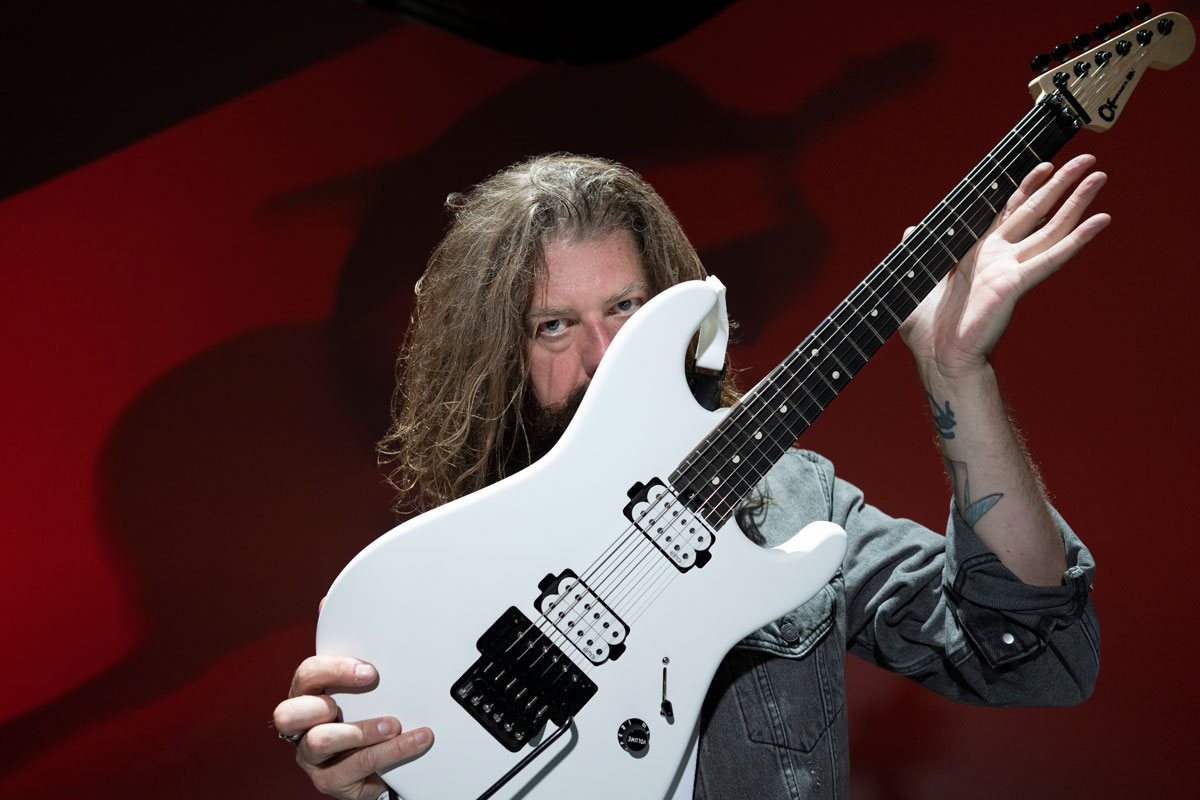
“[With] every guitar I ever had, I was really proficient with a Floyd Rose, and then for 10 or 15 years I never touched a Floyd Rose, so I kind of lost a little bit of that. In some ways it’s kind of like riding a bike, and in other ways it’s like, ‘I forgot about fluttering, dive bombs and all the cool things you can do with a Floyd. It’s just one more thing to have, instead of hitting a pedal, you know.”
You’ve been with EMG for years. What made you decide to fit your new Charvel with your signature Daemonum humbuckers?
“I was asking Tommy [Armstrong-Leavitt, EMG Artist Relations Manager] to see if we could get into the passive world with EMG because I don’t think it’s something they really do a lot of.
Every amp I've played the Charvel through has been fucking awesome, even in the practice room
“There were a couple of tracks that we did [on the new Slipknot album] rhythm-wise where I ended up using a Seymour Duncan Full Shred [passive humbucker], and it sounded really tight.
“I’ve been using EMGs my entire career in Slipknot – 24 or 25 years, something like that – and I’m so used to [them]. But the Daemonums come closer to that passive feel that I’ve used before. It’s kind of like going backwards to go forwards a little bit. It’s like going back to the Floyd, going back to a more passive feel of a pickup, having Alnico and ceramic magnets in them [so they’re] a little more responsive in the volume when you’re rolling things back.
“And with all the DSPs [Digital Signal Processors] like Neural DSP, I don’t really need high-output, highly compressed pickups for that type of stuff. Because those programs kind of get all that out of the way.
“When you’re using a valve amp, if you’re used to the forgiveness that something like Neural can give you, it doesn’t give you the same forgiveness, but it’s more natural. I think it’s a little more pleasing to the ear.”
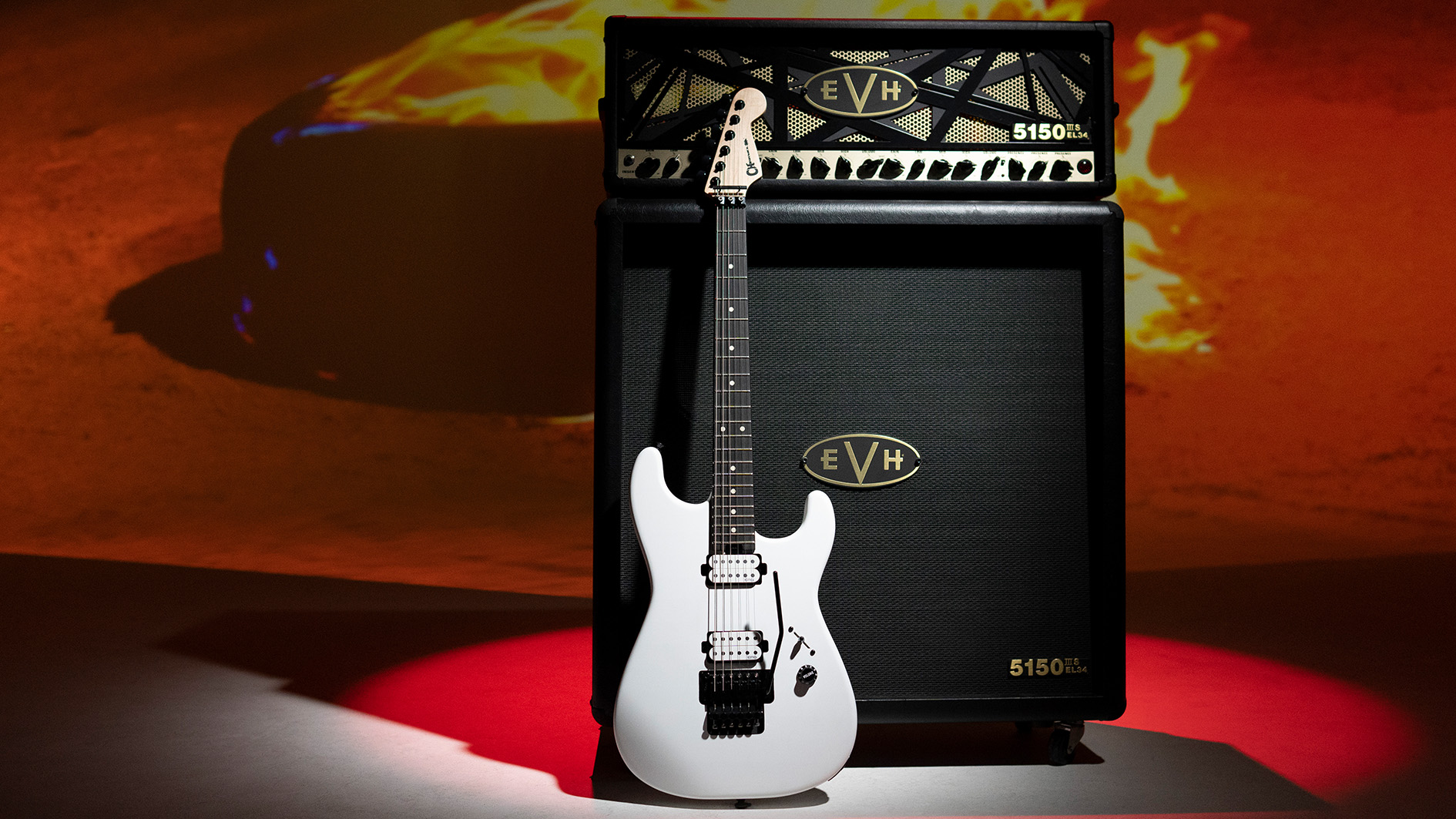
What amps and pedals have you found pair well with the guitar?
“Everything that I’ve plugged into it sounds fucking great. I had an Orange that Adrian [Emsley, amp designer at Orange Amplification] made for me that’s kind of a mod of a [Rockerverb] MKIII that I’ve been touring with.
“I have a Friedman, one of the newer Deluxe series [models]. That amp sounds great, but I’ve been using a Bogner Helios Eclipse, that’s what my main amp has been. I use that a lot in the studio and I’ve been using it for all the live touring that we’ve been doing since Covid.
But every amp I've played the Charvel through has been fucking awesome, even in the practice room. Everything I plug it in through it’s just like, ‘Ooh, yeah.’”
Did you use the guitar in the studio while tracking The End, So Far?
“I did. I used a black one with a maple ’board [on] a couple of rhythm tracks. And then I kind of use both of them back and forth for a couple of the lead tracks. I also used a [Charvel] DK24 with a figured top – I can’t remember exactly what model it is, but it has the two-point tremolo on it. And I use that basically for all the leads – I just slapped my pickups in it.
I’ve got so many signature models out there. I feel like it’s information overload. I’d kind of like to wane them down to one or two
“But I think for the most part, I used one of my Jazzmasters and those three Charvels for the majority of what we did.”
Did you use a whammy bar on any of the leads?
“It’s kind of peppered throughout the record. If there's a drop, or if there's like a break in between riffs or something, I would [use it]. Some of it was overdubbed in as third guitar tracks and things like that, but it’s there.
“And when [producer] Joe [Barresi] has you just go – he’s like ‘Just play along, see what you come up with’ – you’re gonna hit that bar every once in a while. That stuff definitely made it to the record.”
How does the new Charvel fit into your current live rig?
“I have four of them now. I have the first two prototypes that I used in the studio and for the touring in the states, and then I got two new prototypes right before we went on tour in Europe. So I have a black and a white one on each rig. I try to use them as much as I can in the set.
“I'm using them for Dead Memories, Before I Forget – I'd have to look at our setlist to remember: there's quite a few songs I'm playing them on.
“I still don't know which one I prefer. I don't know if I like the maple fretboard one better or the ebony fretboard one better. Eventually I'll do neck swaps on them, and take the ebony fretboard off the white one and put it on the black one.”
My signature guitars are so minimalist, but you can do so much with them. I wanted to keep them simple, that’s by design. I feel like the less you have to think about the better
Do you have plans for any more Charvel signature models in the near-future?
“There are no plans for one. They wanted me to do a DK24. Some of the people that I talked to via my social media are a little bit afraid of the Floyd Rose, and they’re like, ‘If this didn’t have a Floyd on it, I’d be all about it.’
“I just ordered a Custom Shop DK24 with a reverse headstock with the toothpaste logo. It’s going to be a hardtail. Once that guitar gets [made], and if I start playing it live, and if I use it in the studio, that can be a possibility.
“But I’ve got so many signature models out there. I feel like it’s information overload. I’d kind of like to wane them down to one or two.”
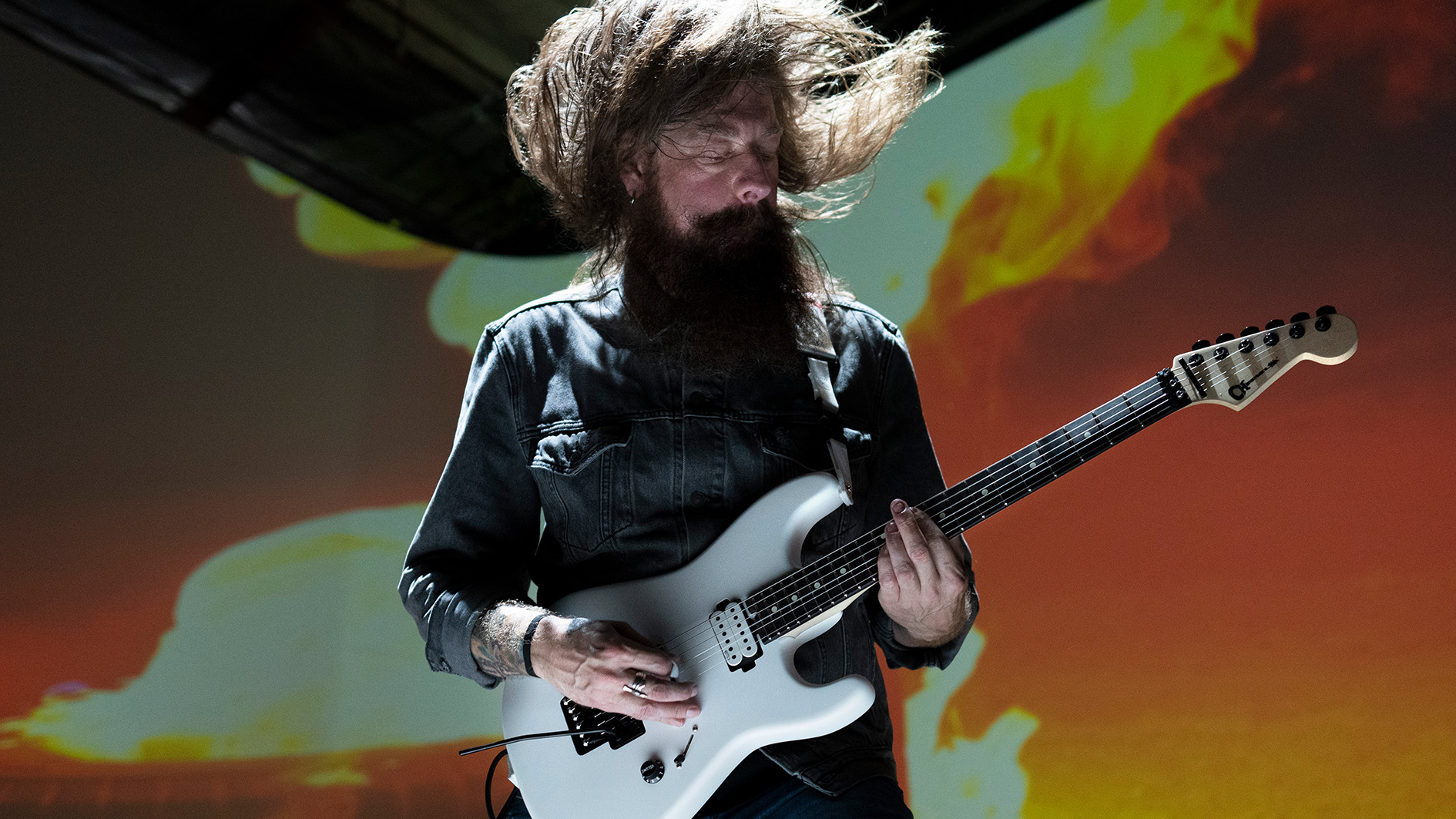
Your existing signature models have stripped-back aesthetics and spec sheets, so it’s not surprising you have the same ethos toward the number of signature models you have.
“Less is more – they’re so minimalist, but you can do so much with them. I wanted to keep them simple. That’s by design.
“I feel like the less you have to think about the better. I’m not a blues guitarist, so I don’t need a tone pot. I flip through my pickups quite a bit. I tend to play a lot of my leads and cleans on the neck position, so I’m constantly flipping to that. But I wanted to keep the controls nice and minimalist.
“That way you can thrash around and move around a lot more without having to worry about hitting a knob or bumping the selector to a different position while you're in the middle of a song, which I still do, but whatever.”
Hearing Metallica's Ride the Lightning changed my life. It opened my eyes to this whole other world of being a guitar player
Charvel is one of the classic ‘80s shred guitar brands. You were inspired watching Warren DeMartini on MTV's Headbangers Ball as a teenager. Who were some of your shred heroes growing up?
“When I first started playing guitar, I was listening to a lot of Mötley Crüe, Dokken and Twisted Sister. And then what changed my life was hearing [Metallica’s] Ride the Lightning. It opened my eyes to this whole other world of being a guitar player. I was like, ‘Holy shit.’
“And from that I found Slayer, Voivod, Flotsam and Jetsam, Megadeth, Overkill and all these other guitar-centric bands. And that appealed to me in a different way than guys like Warren DeMartini, you know. They were playing metal, but it was a different kind of metal. This was in your face, very extreme and very intense.
“Being a 14- or 15-year-old kid learning how to play guitar, you’re trying to push your limits of what you’re trying to learn – what better way than trying to learn Looking Down the Cross off of the first Megadeth record [Killing is My Business… and Business is Good!].
“That’s how I learned how to play guitar – playing along to albums like [Anthrax’s] Among the Living or Spreading the Disease, or even [Overkill’s] Hello from the Gutter or old Testament records.
“So those guys – Dave Mustaine, Alex Skolnick, Warren DeMartini, Scott Ian, James Hetfield, Kirk Hammett – that’s where I woodshedded and learned how to play mainly rhythm guitar that way.
“And then I went through my phase where I was into Steve Vai, Yngwie Malmsteen and Joe Satriani, but that stuff never really grabbed a hold of me because I need a song, you know what I mean? I don't want to sit there and listen to [just] guitar stuff.
Prog for the sake of prog, to me, can be a little bit up its own ass sometimes
“But all that stuff was born out of [artists like] Uli Jon Roth and the early Scorpions stuff, Yes and the ‘70s prog kind of vibe, which is really fucking cool. But prog for the sake of prog, to me, can be a little bit up its own ass sometimes.”
A lot of people will resonate with the idea of pushing yourself as an aspiring guitar player and trying to play the fastest stuff you can.
“I think now it’s evolved to maybe not the fastest, but the lowest or the heaviest, or the most odd time signature that you can find – think bands like Meshuggah and SikTh. [But that’s] a little bit beyond me. I tend to stay away from that just because I like the natural feel of human fours – everything in fours – because I can just move to it better.
“[That’s] not to say there's not a place for that kind of stuff. Because it's mind-bending to try to figure out those riffs and see what they're doing and how they make an arrangement out of stuff like that. But to me, it just falls in the same category as the Yngwies and the Satrianis and stuff like that. It’s a little bit of masturbation.”
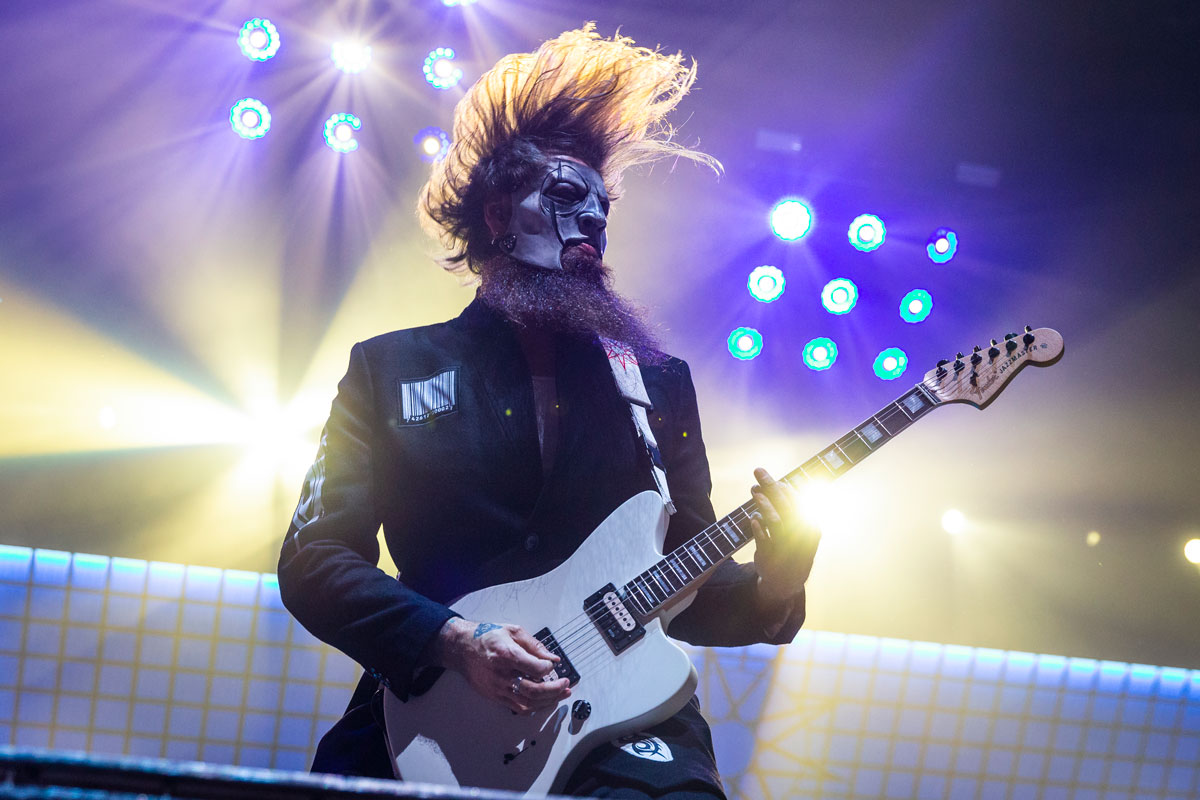
Your bandmate Mick Thomson’s into the ‘80s shred era, too – he has his own signature Jackson Soloist. Has he had a go on your new Charvel signature?
“He picked one up and kind of noodled around with it a little bit. But he’s just so particular with [guitars]. Jacksons have such a wide, flat fretboard and Charvels aren’t quite as wide and flat. I mean, they’re pretty close, but they’re still different animals.
“At some point, we’ll probably trade signature models. He’s got a new signature model coming out – I think he’s gonna do a DK, a Dinky version with a bolt-on [neck]. And when he does that, I’m gonna have to have one of those because I love the bolt-on Jacksons. I think they’re fucking awesome. So we’ll definitely do a swap at that point.”
I would never do a Custom Shop signature model, because I don’t think too many of our fans could go out and spend $10,000 on a guitar
We saw you play a one-of-a-kind Black Paisley Fender Jazzmaster onstage last year, as well as a custom Meteora – will either of these guitars receive an official release one day?
“Kyle McMillin [Fender Custom Shop builder] built me those. I have a Strat, Tele and a Jazzmaster in that Paisley finish. They’re the only real Custom Shop guitars that I have, and they’re fucking amazing. But I would never do a Custom Shop signature model, because I don’t think too many of our fans could go out and spend $10,000 on a guitar.
“I would love to do another Strat with Fender. But since we just did the Charvel, I don't know if that would make a whole lot of sense. If I were to do another Fender signature model, the feedback I'm getting is a lot of people like those sandblasted Jazzmasters that I have.
“That's a pretty metal-looking guitar – the problem is doing that with mahogany is too difficult; I'd have to change the wood and use swamp ash or something like that, which could be cool, but sort of out of the wheelhouse of what I normally use.
“I think it would make sense to do a Meteora in a sandblasted sort of way. I think that would cover a lot of what people are asking for as far as the Fender side of things.”
My Charvel signature model is made in Mexico because it cuts costs a little bit. And I don’t think you’re sacrificing any craftsmanship at all in that way
Is it a big consideration for you, to try to make your signature models as affordable as possible?
“I try to do everything I can to keep the price [down]. Even with the Charvel I tried to [keep the price down] and it was really hard to do. For me, it was important to have the 1500 Series Floyd Rose, my EMG pickups, the mahogany wood and a case, and to keep it under $2,000 was really fucking hard to do.
“That’s part of the reason they’re made in Mexico because it cuts costs a little bit and keeps it at a better price point. And I don’t think you’re sacrificing any craftsmanship at all in that way.
“I’ve played guitars [that are] made in Mexico, made in Japan, made in America, and they’re all very comparable to each other. They’re all right up there in quality.
“So it’s important for me to try to keep that price low. If I could do all of my signature models with Squier, or find maybe an Indonesian or Korean company, or Taiwanese, that could make it up to that quality [I would].
“Squiers are really good fucking quality. My Squier Teles are fucking great. I have one here that I need to take on the road with me because I told everybody I would.”
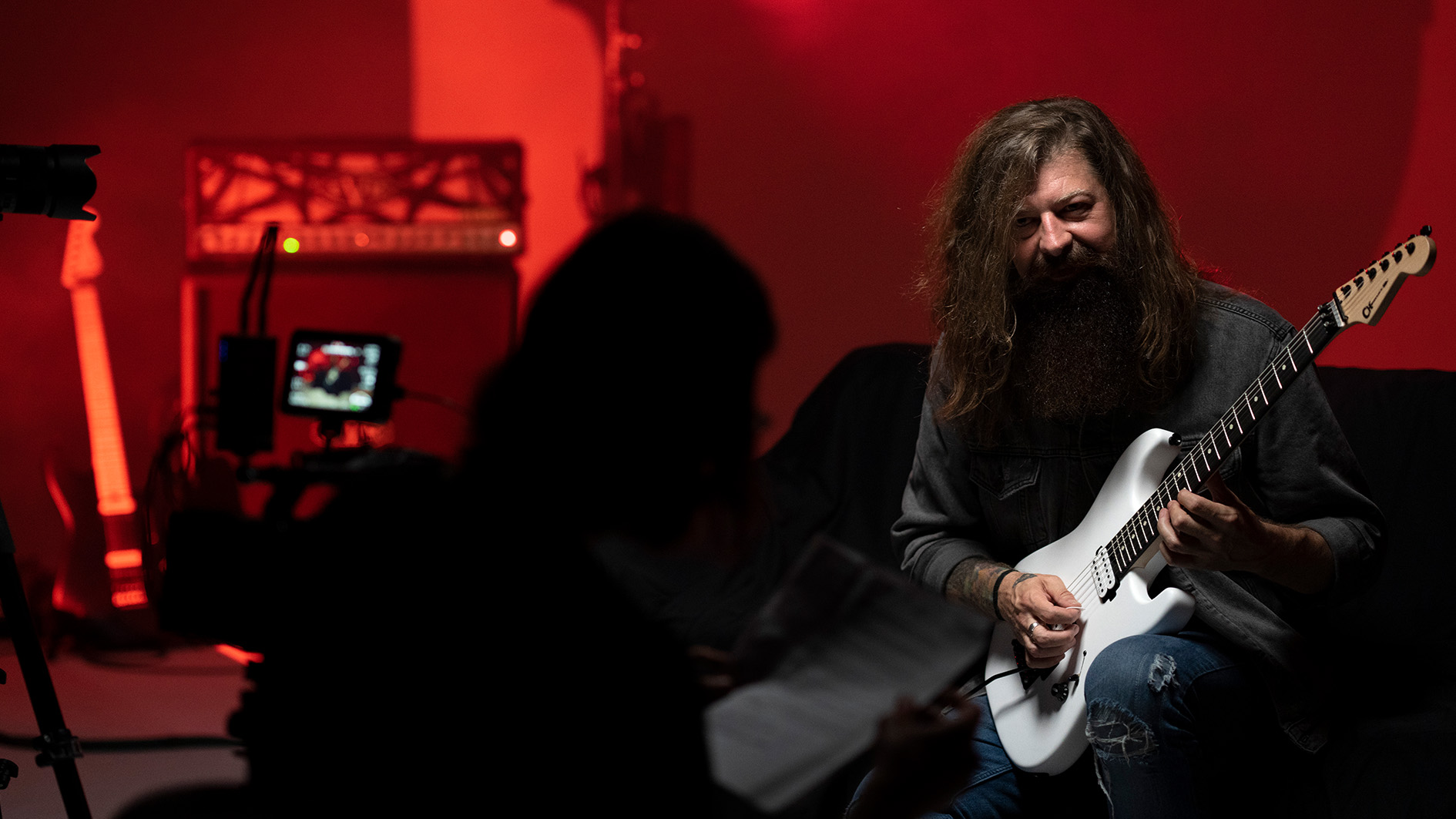
That would be great to see.
“Yeah, I just keep forgetting to bring it with me. Otherwise I would. I mean, it's really fucking good.
“But, you know, to be able to make my signature models and have them come in at like $600 or $700 would be fucking awesome. Maybe that’s the next thing I talk to Fender about.
“Even your top-notch professional guitar players would still be able to find a use for those guitars. The prototype Squier that I have, I pulled it out of the box and tuned it up to A440 because it was close to that anyway, and at the time Death Magnetic had just come out. So I was learning riffs off that record, and was like, ‘This guitar feels really fucking good. And the pickups sound really fucking good, too.’
“I’m gonna tune this to Slipknot and bring it out on the road with me just as it is. [It’s] a $500/$600 guitar that I can just play, you know?”
Slipknot guitar covers are all over YouTube and TikTok. Do you ever watch any, and are there any mistakes you commonly see people making?
It’s fucking cool to see everybody learning our music by ear. That’s how I learned how to play guitar
“I see quite a few of them, and I see all kinds of mistakes. That doesn’t mean it doesn’t sound like the song; it’s just that there’s so much nuance in Mick and I’s playing that, with the tuning we use, and with all the other instruments that are around everything that we do, it’s so hard to pick out that nuance.
“[But] there’s nothing major. It’s fucking cool to see everybody doing it and learning it by ear. That’s how I learned how to play guitar. And I guess I wasn’t hearing all the nuance that Chris Poland or Dave Mustaine were putting in their songs.
“Unless you’re sitting there watching the person who wrote the song play the song, you’re probably never going to be able to pick it out 100 percent exactly how it was recorded.
“Even Mick and I on the same record playing the same part, sometimes we’re not playing exactly the same thing. Sometimes whoever’s editing the takes might edit together what, to them, sounds like the best take, but maybe Mick hit an extra note in there that I didn’t hit, or vice-versa.
“But it’s still pleasing to the ear, [so] it makes it to the record. And that’s what makes the song sound a certain way. It’s a bizarre thing.”
- The Jim Root Pro-Mod San Dimas Style 1 HH FR is available now. For more info head to Charvel. Slipknot's seventh album, The End, So Far, arrives September 30 via Roadrunner.
Sam was Staff Writer at GuitarWorld.com from 2019 to 2023, and also created content for Total Guitar, Guitarist and Guitar Player. He has well over 15 years of guitar playing under his belt, as well as a degree in Music Technology (Mixing and Mastering). He's a metalhead through and through, but has a thorough appreciation for all genres of music. In his spare time, Sam creates point-of-view guitar lesson videos on YouTube under the name Sightline Guitar.
“My brother's trying to knock Norm down in price. He's worth $800 million. He goes, ‘I'll give you a bottle of whiskey on top’”: Frank Stallone on the prized vintage Epiphone that Sylvester bought him – and the guitar's mysterious origins
“More people play stop-tails than guitars with locking tremolos. We dig both”: EVH delivers on its hardtail promise and launches the Wolfgang Standard T.O.M. – which vows to take Eddie's legacy to new heights





